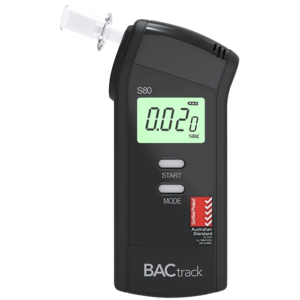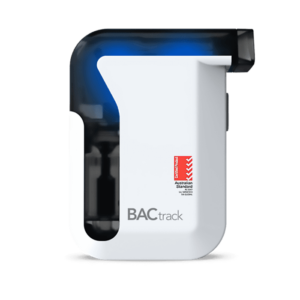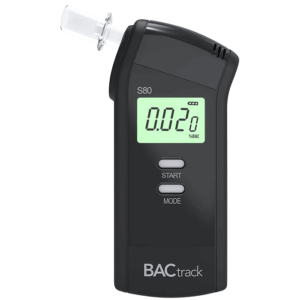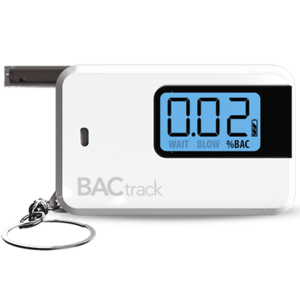Alcohol Detection Test: Purpose, Types, and Understanding the Results
02 February, 2024

The consumption of alcohol is a universal social activity, but heavy drinking can be dangerous. Thus, an alcohol detection test is necessary. Its purpose is to measure the amounts of alcohol present in the body. Consequently, authorities or medical professionals can know the blood alcohol level and take appropriate action if necessary. The testing types available are urine, hair, blood, and breath tests. Knowing the legal limits can help in understanding the implications of an alcohol test.
Underage drinking is another significant concern, as it poses various risks to the health and safety of young individuals. Hence, screening for the presence of alcohol or alcohol metabolites is essential. People typically undergo testing in a medical facility or through law enforcement agencies. Whether it is a responsible drinker or a police officer, knowing the components surrounding alcohol testing is vital. This article will present its purpose, types, and understanding of the outcomes.
Purpose of Alcohol Detection Test
The purpose of an alcohol detection test is to determine the level of alcohol in the system of an individual for a variety of reasons. Police officials commonly utilise the test to establish if a person is drink driving. By measuring the concentration of alcohol in a blood sample, urine sample, hair sample, or breath sample, the test result can provide evidence of impairment that can be used in court.
Many workplaces also administer testing to ensure that employees are not under the influence of alcohol while on the job. Companies have policies requiring workers to undergo alcohol testing, especially for safety-sensitive positions or industries. The test can help employers identify and address potential alcohol-related issues that may impact the performance and safety of the workforce.
In addition, health professionals use an alcohol test to monitor patients who are receiving treatment for alcohol-related conditions. It can help healthcare providers assess their progress, determine if they follow treatment plans, and discover potential relapses. By measuring alcohol levels, healthcare professionals can make informed decisions about patient care and treatment.
Effects of Alcohol on the Body
- Alcohol can cause liver inflammation, fatty liver, alcoholic hepatitis, fibrosis, and cirrhosis. These conditions can lead to liver failure and more risks of liver cancer.
- The drink can impair brain function. This results in memory loss, difficulty concentrating, and impaired judgment.
- Chronic alcohol abuse can weaken the immune system, making the body more susceptible to infections and diseases.
- Heavy drinking can lead to high blood pressure, cardiomyopathy (stretching and drooping of heart muscle), arrhythmias, and a higher risk of stroke.
- Harmful alcohol consumption can have significant detrimental effects on the body. It can impact various organs and increase the risk of severe health conditions.

Types of Alcohol Detection Tests
Healthcare providers, employers, and police officers often choose from various types of alcohol detection tests. One of the most well-known tests is the breath alcohol test using a breathalyzer. It measures the Blood Alcohol Content (BAC) in a sample of breath. The breathalyser test is often utilised during traffic stops, as it quickly assesses the level of intoxication of drivers.
Another common type of alcohol test is the urine test. It can detect the presence of alcohol or its metabolites, ethyl glucuronide (EtG) and ethyl sulphate (EtS). Healthcare providers in clinical settings use urine testing to monitor patients who may have an Alcohol Use Disorder (AUD) or to assess individuals who are participating in alcohol treatment programs.
The hair follicle and blood alcohol tests are also in demand for detecting alcohol consumption. The former involves analysing a small sample of hair to determine if alcohol has been consumed within a specific timeframe. Meanwhile, the latter is testing a sample through a blood draw. It directly measures the concentration of alcohol in the bloodstream.
Accuracy and Reliability
A breathalyser test is widely used due to its quick results, but it may not always be the most accurate. Nevertheless, they are reliable for screening purposes. Blood tests are considered more precise because they directly measure the alcohol concentration in the blood. They are also dependable in identifying even traces of the substance.
While not as accurate as testing a sample of blood, a urine test is reliable in providing valuable information about recent alcohol use. Meanwhile, hair tests can provide accurate outcomes for a long detection window. Thus, people can rely on these for detecting alcohol consumption over an extended period.

Understanding the Results of Alcohol Detection Test
When it comes to understanding the results of an alcohol detection test, it is essential to be aware of the legal limits for alcohol consumption. Professionals will compare the test outcomes to these limits to determine impairment. Knowing this and how the results of the test compare to them can help people understand the potential consequences if the outcome is positive for alcohol consumption.
The legal limit in New Zealand is 0.05%. If an alcohol test outcome shows a BAC above this, the person is considered legally impaired and may face various consequences depending on the jurisdiction and circumstances. These consequences include fines, license suspension, mandatory alcohol education programs, probation, and jail time. If the percentage of alcohol in the test is significantly higher, the penalties can be even more severe.
Moreover, recognising how alcohol affects the body and metabolism can be crucial in interpreting the results of an alcohol test. Weight, gender, and recent food intake can all impact how quickly the body processes alcohol. Being knowledgeable about these can help individuals better understand the outcomes and make informed decisions.
Factors that Can Influence the Result
Several factors can influence the outcome of alcohol testing. Firstly, the type of alcohol people drink can significantly impact the test results. Beer, wine, and liquor each have varying alcohol content, which can affect the accuracy of the test. Additionally, the quantity and the speed at which they ingest alcohol can affect the test outcome.
Another element influencing the outcome is metabolism. The rate at which the body breaks down alcohol can vary, impacting how quickly the blood alcohol concentration decreases. It is essential for individuals undergoing alcohol testing to be aware of these factors and their potential impact on the test result.
Conclusion
An alcohol detection test serves as a crucial tool in assessing levels of intoxication. Whether for law enforcement, workplace safety, or personal health reasons, the test provides valuable information that can help prevent accidents, ensure safety, and deter alcohol abuse. Various types of alcohol tests are available, including breath alcohol, blood, urine, and hair testing. Individuals and professionals can compare them and choose the most suitable method for their needs.
Understanding the results of alcohol testing is essential in interpreting the level of impairment or intoxication. While the legal limits for alcohol consumption may vary by jurisdiction, it is crucial to comprehend that any level of alcohol in the system can impact cognitive and motor functions. A non-negative or a BAC result of over 0.05% can penalise or incriminate a person. Hence, being a responsible drinker is necessary. To enhance protection, people can buy a personal breathalyser from retailers nationwide.





























